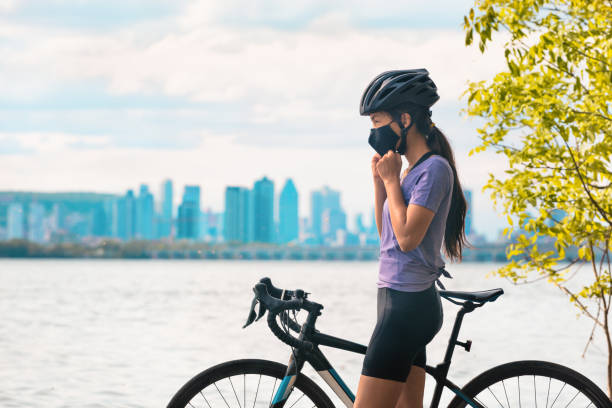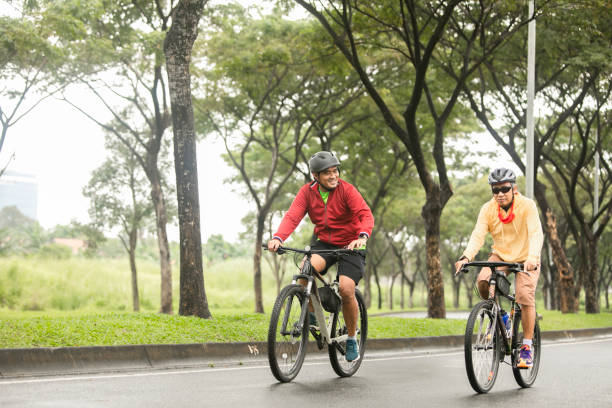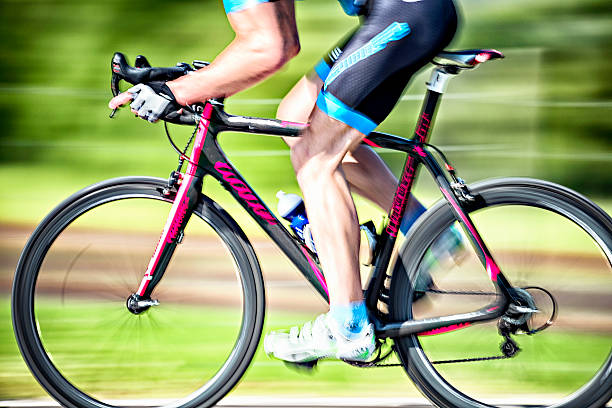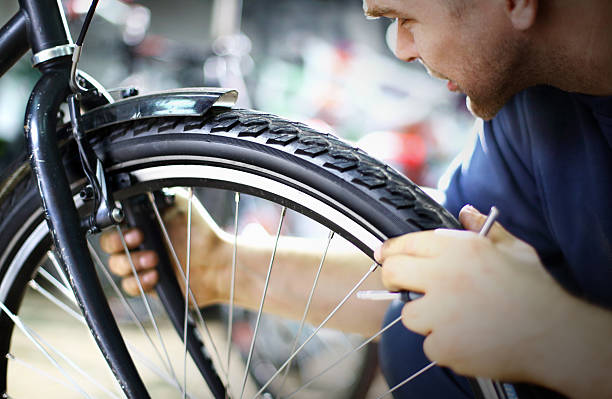If you’re interested in strengthening your muscles and enhancing your physique, cycling is the ideal exercise to partake in. This activity is exceptionally potent at engaging various muscles across your body for a comprehensive workout.
It’s also great for burning calories and reducing the amount of fat in the body, creating a lean and muscular silhouette and helping to increase overall fitness levels and stamina. So how does cycling do all of this at once?
Pedaling is the action that uses most of the muscles activating the hips, knees, and leg muscles as the bike moves. All of the actions required to physically pedal a bike make great use of the hamstrings, calf muscles, feet, and glutes. This can be tough work on a road bike and gets even more intense when riding fixed gear bikes.
To be successful at cycling it’s important to have stamina and core strength to enable you to keep going and maintain your balance. Riding up and down hills also use and target a variety of muscles and it’s important not to push your body too far too quickly or you will end up with injuries.

What are the most important muscles in cycling?
So the most important muscles for successful cycling occur throughout the body, although primarily the focus is the legs and buttocks. For cyclists, the primary muscles are those in the hips and legs because these are what power the bike, but they are not the only muscle groups that are exercised.
Here are the muscle groups in which cycling works:
- Leg muscles
- Calves – soleus, and gastrocnemius
- Thighs – hamstrings and quadriceps
- Feet – plantar flexors, and dorsiflexes
When riding a bike there are two sets of calf muscles that are used, as listed above. They help to power the bike and to keep the heel lifted while pedaling. In the thighs, the hamstrings provide flexibility for the legs to bend, while the quadriceps is the power supply for the body and help the cyclist balance on the bike.
- Buttock muscles
- Buttocks – gluteus maximus
Cycling is a great way to tone all of the muscles in the buttocks region as strong muscles here are vital to helping the thighs move to power the bike down the road. Strong buttock muscles also help to give the hips the motion they require for cycling. So for improved cycling technique, work on strengthening this area as well as the legs. Finding a good pair of cycling shoes can also help ensure your technique stays on point.
- Back and stomach muscles
As well as the legs and buttocks cycling also targets the core area of the body, helping to provide a workout for all essential muscles in this area. Having a strong core takes the pressure off the lower back and improves balance on the bike.
Cyclists with good abdominal muscles will be able to pedal more efficiently and have better balance while riding the bike.
- Arms
- Arms – biceps, and triceps
- Shoulders – deltoids
Cycling is also great for helping to strengthen the arms and shoulders as cyclists use their upper body to stay balanced, while standing up, leaning over, or crouching, during a cycle ride, meaning the arms and shoulder muscles also get a great workout.
Moving the body regularly like this means the whole upper body region gets a great and regular workout, helping to tone up and exercise the whole body.

Why are muscle actions important in cycling?
Having strong and flexible leg muscles will help to improve the speed and efficiency of your pedaling when riding the bike, which is particularly useful if you take part in cycle races or speed challenges. This in turn helps to activate your hips and calves.
The stronger you are and more efficiently you can ride, the more you will build up your overall stamina, aerobic levels, and fitness levels, enabling you to cycle for longer and longer distances.
It’s important to do regular stretches and warm-downs before and after cycling routes to avoid strains and pulls in your muscles. You need to avoid muscles becoming tight, and give your body time to recover after every bike ride.
While cycling is great for working and strengthening the majority of the main muscle groups in the body it also works for improving lung capacity and helping the body to improve overall fitness and stamina levels.

Conclusion
While cycling is most known for working the leg and buttock muscles, it actually works most of the rest of the body’s muscle groups as well, and the stronger your muscles become, the better a cyclist you will be so it’s a win-win from both sides.
For improved aerobic fitness, overall improved posture and balance, and trim and muscular body, cycling really can’t be beaten as the perfect exercise regime. Not to mention the opportunity to visit beautiful countryside scenery, take part in competitive racing events and join social cycling groups as part of the overall fun of the activity.
More on Cycling:
Best Mountain Bikes
Best Road Bikes
Best BMX Bikes
Best Fixed Gear Bikes





